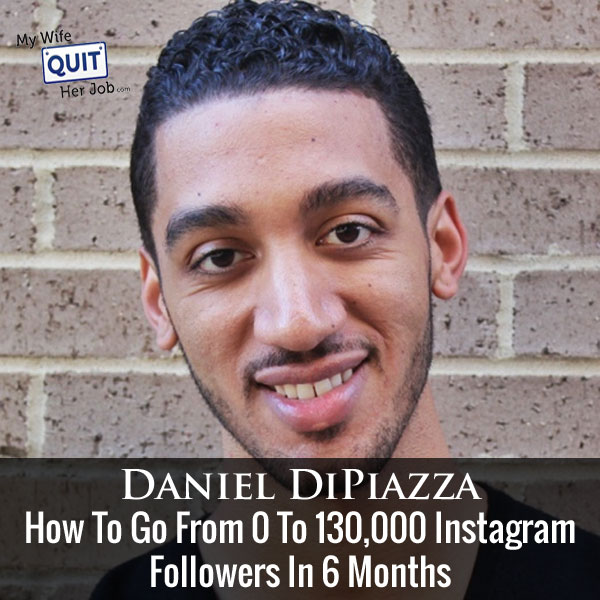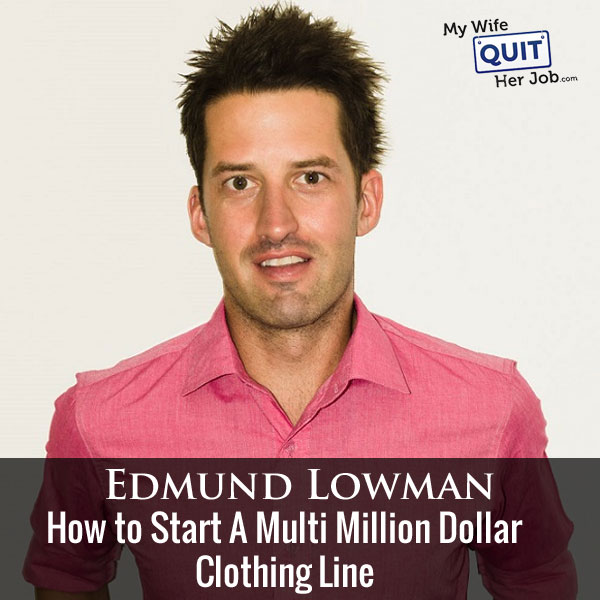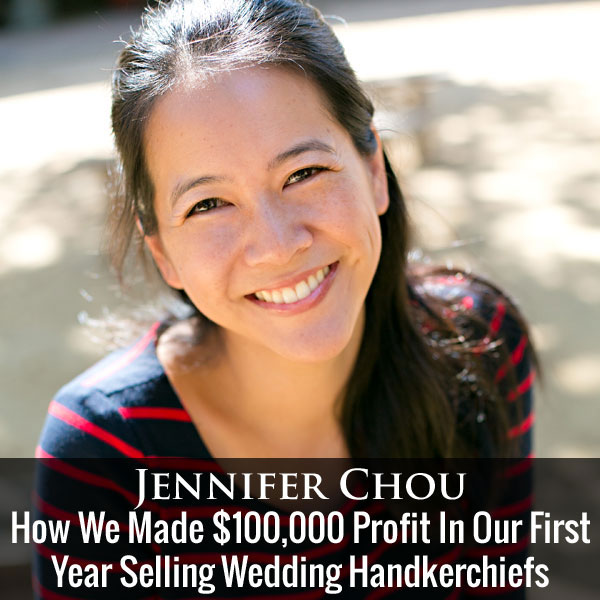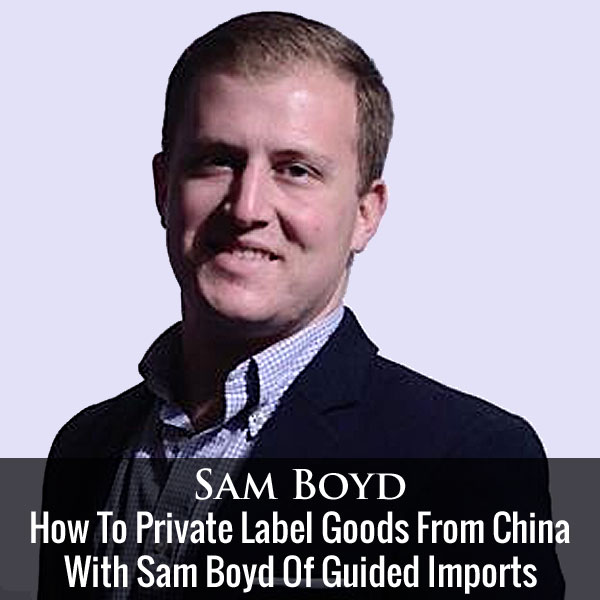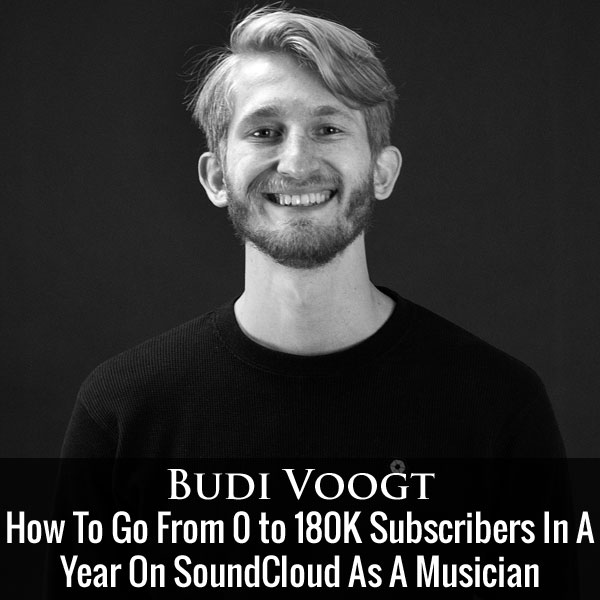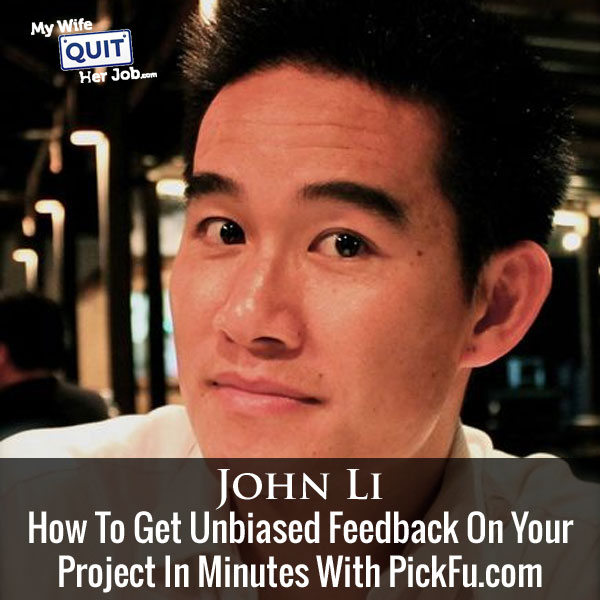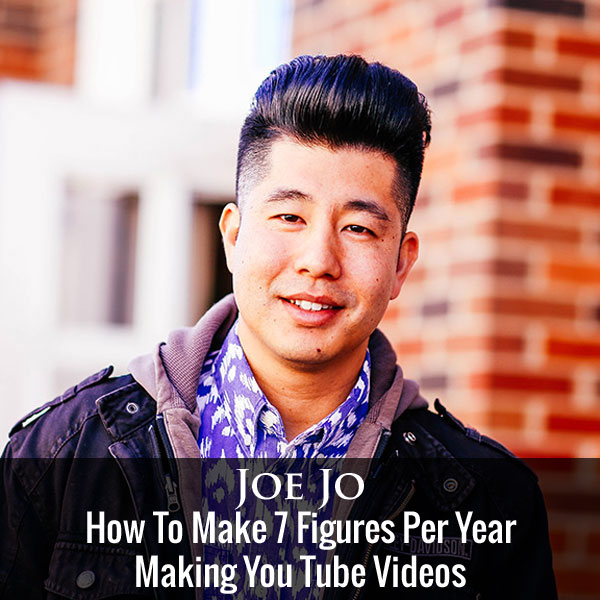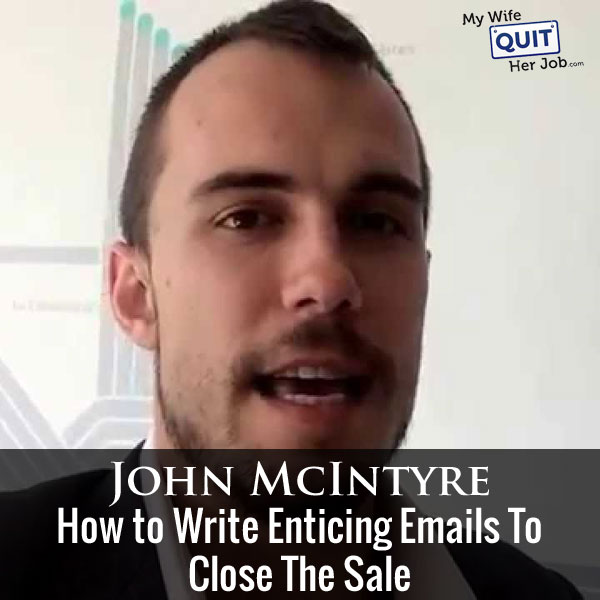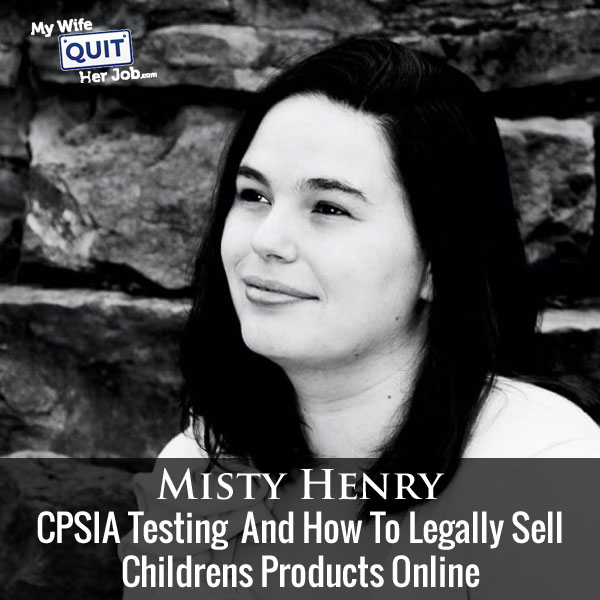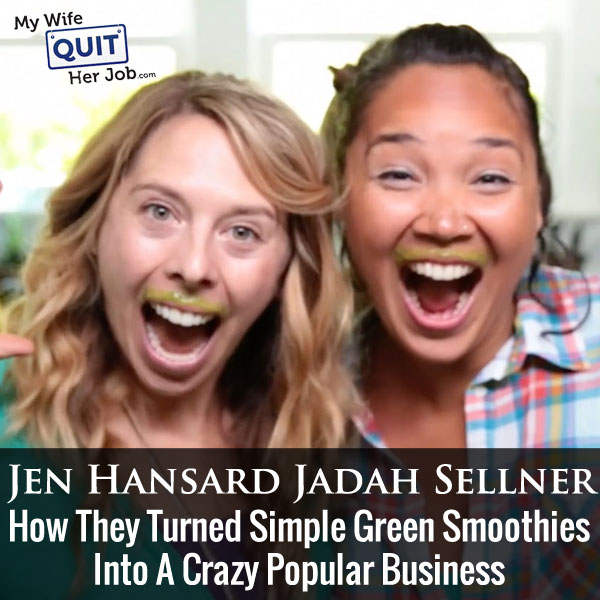Podcast: Download (Duration: 49:40 — 57.1MB)
Today I have my buddy Daniel DiPiazza on the show. Daniel is someone who I met recently at the Import Summit in Orlando and I’m really glad I did. He’s the owner of Rich20Something.com where he teaches young people how to start their own freelance businesses.
And to be honest, the content he puts out comes at great time where kids graduating from college are having problems finding high paying jobs. His site is crazy popular and what’s cool is that he’s built it up in an extremely short period of time.
In addition to Rich20Something.com, he’s also successfully launched a test prep company and bootstrapped a web development firm. He’s worked in marketing and copywriting for well known influencers like Ramit Sethi and his brother Maneesh Sethi who I had on the show back in episode 69.
And finally, he also regularly contributes to publications like Under30CEO, Entrepreneur Magazine and the Huffington post. In short Daniel does a ton of stuff and he’s killing it online with a large email list and over 130,000 followers on instagram in a little over 6 months.
What You’ll Learn
- How Daniel’s site makes money.
- How Daniel generates traffic to his site.
- How Daniel has amassed 130K instagram followers in just 29 weeks.
- How to use instagram to market your site.
- What people with very little money to invest can do to make money online.
- How to get freelance gigs and make money immediately.
Other Resources And Books
Sponsors
Bench.co – If you hate bookkeeping and accounting as much as I do, then why not use a service and contract everything out? Not only is Bench Accounting easy and affordable but you can click here and get 20% off your first 6 months of worry free bookkeeping.
Transcript
Now before we begin. I’m happy to announce that I’m holding my own ecommerce conference on May 19th in Miami, Florida this year called the Sellers Summit. Instead of the large crowded conferences that you are used to hearing about, mine will be small and intimate with a focus on learning. So picture small round table workshops instead of large auditoriums with a focus on actionable strategies that will grow your ecommerce business. For more information go to sellerssummit.com and watch the video.
Now, before we begin, I also want to give a quick shout out to famebit.com for being a sponsor of the show. Famebit is the number one market place for influencer marketing with over 20,000 YouTubers, Instagramers, people on Twitter and Vine looking to promote your company in any vertical whether it be, beauty, tech, gaming, pets and more. Yes, you can get famous YouTubers and Instagramers to promote your business for as low as 50 bucks. And the best part is that you don’t really need any money at all to post a campaign and receive free proposals from creators. Now if you’ve listened to my podcast before, one of my guest Emanuel Eleyae used famebit.com to make over $65,000 in four months with YouTube influencer marketing.
And the best part is if you use coupon code “my wife” at famebit.com, you will automatically get $25 off. So go to famebit.com right now, and get famous YouTubers to promote your products. Now on to the show.
Welcome to the My Wife Quit Her Job Podcast. We will teach you how to create a business that suits your lifestyle, so you can spend more time with your family and focus on doing the things that you love. Here is your host, Steve Chou.
Steve: Welcome to the My Wife Quit Her Job podcast. Today I have my buddy Daniel Dipiazza on the show. Now Daniel is someone who I met recently at the import summit in Orlando and I’m really glad that I did. He is the owner of rich20something.com where he teaches young people how to start their own freelance businesses, and to be honest the content that he puts out comes at a great time, because kids are graduating from college right now and they are having problems finding high-paying jobs. Now his site is crazy popular, and what’s cool is that he’s built it up in an extremely short period of time. And in addition to rich20something.com, he is also successfully launched a test prep company and bootstrapped a web development firm.
He has worked in marketing and copywriting for well-known influencers like Ramit Sethi and his brother Manish, who I had on the show way back in episode 69. And finally he also regularly contributes to publications like under 30 CEO, Entrepreneur Magazine and the Huffington Post. And sure Daniel does a ton of stuff, and he is killing it online with a large email list and over 130,000 followers on Instagram in a little over six months. With that welcome to the show Daniel, how are you doing today man?
Daniel: Wait a minute your wife quit her job?
Steve: Yes she did, I just met your wife too, did she quit as well?
Daniel: She didn’t quit, she is the one supporting me actually.
Steve: Is that right.
Daniel: Now that was [inaudible 00:04:02] get you, thank you so much Steve.
Steve: Yeah no problem man, so tell us about rich20something.com, how it got started. I like the story that I heard at the conference, about how you got started and all the stuff?
Daniel: The information is about story. You know what and this is one of those things where Sarah is like you don’t — I mean I guess you could probably know how mad and sick she is with that story at this point. Like I think every great story teller or entrepreneur, comedian, entertainer, everyone has like a collection of like five to seven stories that become their like Joseph Campbell, hear all these Johnny type things.
So you develop like a unique cadence for how you tell them, and you’re like the details while they are very like intriguing details or the same every time, because you want to like find what part of the story hit and repeat them, right? So this part of whole thing is like — it’s a true story and I love talking about it, but man Sarah, she used to hate it more time she is like I hate this, don’t talk about it anymore.
Steve: I’m pretty sure that a lot of the listeners haven’t heard it yes.
Daniel: I know.
Steve: You will be doing them a disservice.
Daniel: I know so they haven’t listened to this anyway, but I’m happy to tell them. Basically the story takes us back to when I was working at this restaurant; it’s called LongHorn Steakhouse which was in Atlanta. And we only have 20 LongHorns in California, I think their sister company is like our garden, red box, so it starts at the restaurant if you can imagine that. I remember it’s like five years ago now, I graduated school a few years before in 2009 and I kind of had worked pretty much every job that was conceivable, assuming that I didn’t want to go back to school to get a graduate degree, and I didn’t want to go into the like the corporate, like cute little things. So essentially I did everything that I could do to kind of make ends meet. I worked in retail; I was the guy holding the sign, flipping the sign up that thing. I worked at UPS with the brown little shorts which I look amazing in.
And one of my last jobs or my last job actually was at this restaurant. And for everyone who’s never worked in food service, you should probably do it because it gives you a new kind of respect for whoever that’s bringing your food. But one of the things that most people don’t know is that you don’t actually get paid for any work that’s not serving. So tipped employees get like $2 and somehow change an hour. Not in California, California has a decent minimum wage. But in every other state basically it’s like 2.14 an hour. And what ends up happening is you have also other work to do on the restaurant. Cleaning up the restaurant, pat the stupid low sugar packets in order, I mean loads of whatever the thing is, you get paid like two bucks dollar for that.
And then taxes and social security which we’ll never see, take away all that money and sometimes you actually end up owing the restaurant money, because — sorry owing the like government money, IRS money, because of like the negative balance you have from all these taxes, right? So it’s pretty crazy and I remember specifically the day kind of I had the light bulb go off, I was scoping these butter balls. For me that was the thing they liked to put me on, that was the station they liked me to be on, I don’t why, maybe it’s my cute face.
But they laid out like ten trays of butter for me to scoop or ten like serving trays and each tray had 50 little ramekins which are these plastic dishes, and I was scoping the butter in there. And I get to the end, and I’m like two little ramekins away from finishing so do the math, it’s 498 butter balls not exaggerating. I’m doing the stupid butter balls, and my manager comes up behind me, he is a tall guy, six foot three, his name is Scott, big blonde hair, I think that’s called a towhead right?
So he comes up behind me and he inspects the butter balls, he looks at them, he kind of turns up to the light as if he is really doing something valuable, and he looks at these balls, he says you know what, these balls suck, do them all over again. He starts to take the balls and he dumps all the butter from all 400 plus balls back into this big bat that we had. I guess they were round enough for him; they were maybe too chunky or uneven, whatever.
So at this point he is undoing all the work that I already did get paid for, and I know this sounds like a stupid or maybe like frivolous reason to get mad, or maybe someone’s grandparents would say, oh well that’s just you paying your dues. Me fine, but for me it really pissed me off, and I was like you know what I had to find a way — I had to find a way to get out of here.
I know that I don’t want to go back to school, because there is nothing that I want to pursue at that level of an education like for graduate degree. I didn’t want be a doctor or a lawyer or engineer, so that was out. I didn’t want to go back to work where [inaudible 00:08:49] I saw my friends, but I knew I had to figure something out, and that was the time I had the light bulb and I’m like, okay I got to figure out how I can make something out of the skills I already have. And that was the impetus that got me rolling into starting my first business which we scaled to six figures, and that was the test bulb company.
Steve: Yeah, and we’ll go into a little bit more on that later on when we talk about some advice that you can give to people who are looking to just make a little bit extra money on the side. But I did want to focus initially actually on how you kind of built up rich20something.com. At the conference we kind of shared a couple of numbers and you got this gigantic email list and Instagram. So first off how does your site make money right now?
Daniel: That’s so great — I think my parents should be listening to this because they still don’t get it, they don’t understand.
Steve: Neither is my mom either man.
Daniel: That’s the cool thing too, you never really know who’s — I mean you look at websites you never really know how much money they are making, it’s not always obvious. So rich20something.com if you go to the home page, it’s just a landing page right now, there is a blog as well. But the site makes money through a couple of the products that are developed, and those products are only available if you join the email list.
Even after you join the email list like we don’t initially just sell you stuff, like we give you a lot of free content based on some of the stories I just told you, where I give you exact actionable strategies and tips. And then at the end of that if you feel like it’s a good fit, then I can share the information with you, we can go a little bit deeper with some of the step by step program I have developed around these experiences and tested information.
Steve: Okay so it’s just courses, are you doing any sort if advertising, or affiliate revenue or anything like that?
Daniel: So just courses right now. I have done some affiliate stuff on my side, like other people promote my stuff. I brought in [inaudible 00:10:33] stuff right now and I don’t know when is the time to do that, or if it’s the right time to do that, I don’t know when that’s going to happen, but I probably eventually will. But it’s essentially only courses right now, we do periodic launches, we do — we have some stuff that’s running ever green, but for the most part it’s just courses that is very subtle, it’s not something that piss people all over the head.
Steve: Okay and then so in order to sell these products so you still have to get people onto your site and onto your list, right? What are some of the different ways that you actually generate traffic to your site, like let’s say you got a brand new blog?
Daniel: That’s a great question, so first of all one of the things that are bringing traffic and one of the reasons why I don’t hate talking about it, but always like—I’m always afraid when people ask me about, oh how do I build an email list? The reason I cringe is because I feel like everyone has done it a slightly different way, and I can tell you exactly how I have done it, and you can try the exact thing and it might not work.
Then you’ll get mad, you’ll be like I did exactly what you said, it didn’t work. And I think there is a lot to do with the content — I will answer the question by the way, I will tell you how I do it. But I just want to preference it like anyone who is like — I just want you to know that email — by building an email list, and getting traffic to your site is a very individualized thing, and you could follow a formula, but like you got to find out where you fit in.
So that being said I use three ways by the way, first way is via syndication partners. So over the last few years, and we could dig into this if you want to, but over the last few years I built relationships with a bunch of different — like I guess brand name publishers. So in addition to the ones you named like Huffington Post, Entrepreneur, I also have a column in Time Magazine, Fortune, Forbes, we are working on Ink and Esquire right now. Other CEOs want, but like I did columns in a lot of different highly frequented sites, and they allowed me to write content and write up things that resonate with my audience or resonate with their audience, and then I can include links back to my site. So it took me a while to build those relationships, but that’s a big part of my traffic.
Steve: Can we talk about that real quick on how you even start building those relationships in the first place?
Daniel: Yeah, I would love to. A lot of times it’s not really a secret, the first thing you got to remember about syndication or about getting bigger sites to like pay attention to you and like promote your stuff, is that a lot of these sites, especially sites like Fortune, Time, well they are prestigious names, they are also content course basically, like they need content and there is never enough content.
So well there is like this whole prestigious like essentially like this wall that you can’t surpass, or you can’t surmount, really they need your content and if you know how to approach them you can get to them. What I like to do, I like to think of it a pyramid, and I think of the syndication partners at the bottom as the ones that are easier to get into, and I use those to leverage my way to the top.
So an example of that might be Huffington Post. Huffington Post is a brand name, but it’s quality isn’t perceived as high as Entrepreneur, typically speaking right? So to get into Huffington post, I mean to be honest with you I’ll tell you what I did. I just cold emailed Howe [ph] in Huffington, I’m like hey let me in. Yeah, I said let me in and I’m not the one only one that’s done, I have several friends who have cold emailed her, they are like sure.
So I guess that’s just her way of giving back. But you could easily find the editors at Huffington Post, pitch them and they’ll let you in, and not only will they let you in. You might have pitched them a couple of times with a good concept, but they’ll let you in and once they do that, you have access to their backend and you can pretty much write whenever you want, whatever you want, so that’s the first thing.
And then I use that to step into myself, I jumped in Huffington Post, and once I get some credibility and I built up some articles there, I went to Entrepreneur, and I found some friends who were already there that I already knew, and I was like hey who’s your editor? They give me the name of the editor, and I cold pitched and I was like, hey, look I write for Huffington Post, I have done some cool things, I think I might resonate with your audience, got in there. Once like I’m not leaving anything out, that was really the story.
Steve: Did you have Rich 20 Something at that point with the library of articles?
Daniel: Yes.
Steve: Oh you did okay.
Daniel: And one thing I’ll say, when I say syndication I literally mean syndication, I don’t write new articles for these websites. I take articles I have already written on my website and I repost them on these websites. That allows me to move a lot faster through my systems.
Steve: I see okay, that makes a lot sense then okay, yeah, because I know people that hire copy writers to just reword their existing articles, but it sounds like you are just posting everything verbatim.
Daniel: Yeah, I mean that works too, the only thing I make sure of is that — is published on my site first, then I give it a few weeks just for the SEO juice on my own site and then I repost it. And they need it, so that’s the first way that I get traffic. The second way is the social media, so for me that big social media source is Instagram, and we’ve talked about that a little bit before the call.
Steve: We have and we are going to go into a little bit more depth. Okay so we’ve covered syndication, let’s talk about these 130,000 Instagram followers that you’ve immersed in just 29.5 weeks.
Daniel: Oh my god it’s really…
Steve: I stalked you…
Daniel: You stalked me; well it’s actually 132,000 thank you very much.
Steve: Sorry about that.
Daniel: Our growth is a little bit of excitement pushing us hard, but the first 100,000 of those came in four months, so pretty good right?
Steve: Yeah, no, awesome, yeah, that’s like the understatement essentially.
Daniel: Well one thing about Instagram which I was totally not on board with using it as a platform in the beginning because I thought what’s the use, you can’t post any links in your images, so how am I going to get traffic? And what I realized is that there is only one link on Instagram right now. I’m sure they’ll roll out more as the platform develops, but right now you can really only post one link and that’s in your bio link which is your profile for your Instagram account. And that alone has driven 40,000 opt-ins to me in the past five months or so.
Steve: That is ridiculous.
Daniel: Yeah it’s ridiculous stuff, so you do you want to dig it how I did that?
Steve: Yeah, so let’s talk about the different strategies first of all, okay actually well I’ll just let you talk, and then I’ll interrupt you.
Daniel: Yeah, so anyone who is keeping track, first strategy is syndication, second strategy social media, and for me specifically Instagram okay? So the thing you have to know about Instagram is that it’s kind of like there is two things going on here. One is community building like finding content that people will really like, and then the second thing is promotion, finding a way to drive people back to your site.
I think the most valuable part probably of that isn’t the promotion part, it’s probably the community building, because you have to have a good relationship with your audience so that your engagement is high, so when you actually do post something in promotional they’ll go and do your thing. So that’s the first thing, so essentially what I have done is I looked at what type of account I wanted to create.
There is different types of accounts, there is — there are like — there are accounts that’s just do quotes, there are accounts that are like more of a personal brands where it’s just people taking pictures of their ice cream, or which [inaudible 00:17:35] do I have for the day. There are people who just promote or who just like their fan pages essentially like all Bentleys, they are just pictures of all Bentleys, stuff like that. There are different types of accounts and what I realized– I try to look at what was doing well in the space.
So the first thing I realize is since I’m very approachable in my emails, I’m very approachable with my videos, I realized I kind of probably should position as a personal brand, but I also realized I was hot right now at Instagram and generally in what I considered to be this entrepreneurship lifestyle hustling bubble.
What’s really popular is like motivational quotes, cool pictures of interesting lifestyles and things of the like right. I try to combine my personal brand with some of those other images of like luxury things and motivational things, and it’s come out to be a pretty good mix. If you look at my account adwords or something, it’s a combination of cool pictures, interesting quotes that I find to be meaningful, and also pictures of what I’m am doing in my life.
Steve: Right and an occasional video also, right?
Daniel: And occasional video also yeah. That is what I’ve even moved more into, it just in the past week or so, I’ve started doing a bit more comedy, just humor stuff because humor gets the combination going. People love to see things that make them laugh, and they associate that stuff with you. I try to just be a good mix, but primarily it’s a personal brand so you can see it says restoring something and then the name is Daniel Depiazza, and then the bio, it has a little bit about me and a link to right now my YouTube channel, but typically it’s a link to an opt-in.
I started off just like everyone else, no followers, no credibility on that platform and the first thing I started doing was I started creating great content. One of the apps I use is called Word Swag and Word Swag, if you’ve ever looked on the something and you said man that’s a really beautifully designed image. I wonder if they had a professional designer to do that, or that I thought that was really hard to make in Photoshop. They probably use Word Swag and Word Swag is just a simple application that allows you to arrange beautiful images, and text so…
Steve: You do all this on your phone right?
Daniel: Yes it’s all done on the phone which is– it’s not an invisible limiting factor as you might think, it’s actually pretty easy once you get into it. It’s all about clicking those images and in the beginning what you have to do to get traction on Instagram is you have to follow other people. Many people that I talk to, and my friends who were on Instagram all of us certainly comfortable with this, because it feels like a spamy thing from Twitter from seven years ago, where you follow a million people in a day and hope they follow you back, and then you un-follow them if they don’t follow you, all that crap. Then you get robust to automate that, then you get a whole bunch of followers from India all that kind of stuff. You will need all that follow, unfollow and all that crap and like…
Steve: Yeah I remember.
Daniel: Yeah they’re generally turned off by it, but it’s but that’s not really the process. Basically I use this app called Crowdfire, and what Crowdfire allows you to do, it allows you to essentially make the process of following people a lot easier because on your phone it’s very hard click, click, click, it’s not easy. The desk top application of Instagram doesn’t allow you to actually use the program, it’s very limited.
Crowdfire allows you to use the desktop format to basically find people who fit with your message. Basically what I’ll do is I’ll find other people who have my account, the web users that I would like to attract. One of those accounts might be like my friend Nathan. I found a magazine who by the way taught me pretty much everything I know about Instagram. I’ll look at Nathan’s account and I’ll say all right, Nathan has the type of followers that I want to attract.
Now I’m going to go follow his followers and so I will have already have some content out that resonates with what I know I’m looking for in terms of audience. Then I’ll go follow his followers and Instagram allows you to follow up to 400 people a day, and you can do it in increments of 100 meaning that you can follow 100 people, and then you have to take a break for a few hours. Follow 100 people and take a break, but I maximize that. In the very beginning I maxed that out every single day.
Steve: This is a manual process right, you’re physically clicking?
Daniel: I’m physically clicking at least 400 times a day in the beginning. Eventually you start to build up the amount of people you’re following and about 30 to 40% of those people will follow you back. You start to grow your following you as well. Eventually what happens is the ratio starts to balance out, because what happens on Instagram is you’re only allowed to follow a maximum of 27,000 and 7,500 people depending on I don’t whatever Instagram feels like letting you do that day.
Basically I would follow people, I would max up my following for about four, or five days, then I would spend a day or so un-following people just to keep my ratio balanced. Eventually I got to the point where the number of people I was following was smaller than the number of people that were following me. Eventually the ratio started to grow, and so in the first couple of weeks I got to about two or 3000.
Over the first month I got to maybe four or five, and I grew to probably double that by up to 10 or 12 and in the next month. It typically grows; I guess it would be pretty linearly I guess. It is a pretty predictable growth pattern, and so over the next four months typically it doubled. I guess it would probably be expediential than exponential, because typically it doubled.
For the first three or four months the growth doubled every month, so it was like the first month it was like three to five K and the next month was like five to 12 just using this strategy. Then I would finally improve in terms of space and eventually I would make friends with them. They would help me out by shouting me, but this is the core strategy is following. Then eventually what I started doing was once I got to 30 or 40K I started meeting other people who had much bigger accounts than me in the space.
I just started paying them to shout me out. I reimbursed myself by having like a very, what I call a tri-bio product, and it was like a little nine dollar productivity pack that I put in my bio. Basically I would put the little productivity link in my bio link, and whenever someone signed up to my list they would have an option to buy that. That nine dollars made me with the amount of following I was getting and the amount of work I was putting in, it was a lot of work. I was posting probably eight to 10 times as day in most days.
Steve: Really okay.
Daniel: It’s a lot, it’s a lot, but…
Steve: Is that the frequency that you need to do in the very beginning?
Daniel: In the very beginning yes, it’s about volume and quality just because you have to get those, you have to get that library of content up there and have a lot of things for people to look at and get more engagement. That triple end product really helped me, and I started really being impressed with the account. I was making at least two grand in a month just off the nine dollar triple bio product. I reinvested that money to get other influencers to pay them to shout me, and that threw gas on the flames, and I was like it will grow faster.
Steve: Interesting. I just wanted to take a moment to thank Bench Accounting for being a sponsor of the show. Now I love running all of my online businesses, but you know what I hate doing the most, book keeping. Seriously keeping track of receipts and expenses is easily the worst aspect of entrepreneurship hands down and here’s where Bench Accounting comes in. Bench is an online book keeping service that pairs you with a team of dedicated book keepers who use simple and elegant software to handle everything for you.
They’ll collect all of your financials and turn them in to nice concise financial reports, so no more data entry, no more number crunching, and no more headaches. Plus it’s reasonably priced and the best part is that you can get 20% off of your first six months if you go to bench.co/mywifequitherjob. Once again that’s bench.co/mywifequitherjob to get 20% off of your first six months, now back to the show.
Where can you find people to pay to give you shout outs?
Daniel: Well I mean you can look for influencers in your space. Instagram kind of and I don’t know if I’m supposed to be saying this. I don’t think it matters, everyone knows this, it’s in the space. There’s a little underground market of, there’s an underground economy. A lot of people who have accounts over $100,000 over 100,000 people, always some might have even less 40, 50,000, take money in return for shouts. Basically it’s where they send out an image where in the link, and then in the catch and they say blah-blah-blah about this image, brought to you by my friend, then they probably put you name in there.
They say follow them for more advice, tips or whatever right? And that’s what drives people back to your page, because they get to follow you and then take those few followers and whenever you want to promote your content you say, hey guys I have free bonus, a free mini course, a free guide for you. Check my bio link, and you can use image that just says check my bio link basically, and that will drive people to that link. They’ll sign up for your stuff, and you’ll grow your email list as well.
Steve: Okay and then you mentioned community in the very beginning, when does that kick in?
Daniel: Yeah so one thing that Instagram, you’ll notice as you get more involved is like you’ll see a lot of the same people commenting on your stuff, and also see people liking your stuff. Sometimes the promotional aspect, you have to put aside in order just to get more people talking and more people engaged.
One thing I might do is I might post up an image with no ulterior motive basically just saying, I’ll post up an image that will show a picture and an image that will say tag the person who you think is going to have a, who’s going to be really successful this year. I will get them to tag their friends, I will get them to talk, I will get them to purposely engage them to try to see as many comments as I can get, or post an image of myself, I did this a few months ago.
I posted an image of myself and said hey guys, having that chance to thank you guys individually and I really want to let you know that I appreciate you for following my account and liking and sharing my images. Please introduce yourself in the comments, and tell me where you’re from. I’ll get– I think that post got almost a thousand comments, stuff like that. You just engage them and then again when you want to promote something, it’s much easier.
Steve: Okay and so it looks like at your account that most of your stuff is non promotional. In fact it’s very rare that I saw a promotional post.
Daniel: Yeah I don’t have anything, I don’t really have anything promotional and sometimes I delete the promotional posts, but typically speaking I don’t have anything, I haven’t got anything promotional in a while, because I’m trying to focus on growing my YouTube right now. I haven’t even with folks on the email list, but particularly my ratio is maybe if I am posting, right now I’ve posted about three or 400 a day max. Maybe three times a day and probably once every three days I might post up a promotional post.
Just became I’ve been pretty aggressive like over the past three or four months, I’d love to slow down, but when I was being more aggressive I was probably doing a post every other day with those promotional. After I was done with that I would take it down, so it didn’t cloud up my page.
Steve: What about hashtags and the actually content that you put in a post?
Daniel: Hashtags are something that I think they still work, but one thing you have to be careful about this. There’s a limit of 30 hashtags per cache, and so there are different size, like I think about [inaudible 00:28:51] square is one of them, where you could look up the most popular hashtags in your niche and other people are searching for the hashtag, they will find your post and hopefully find your profile and follow you.
That all works, but I think that Instagram is getting more aggressive with slapping down people who are essentially hashtag savvy. If you put up 30 hashtags, and you put up the same 30 hashtags every time, Instagrammers they don’t like that. I think they’re trying to be more careful about launching that, so I do post hashtags occasionally now, but in don’t do it as much as I used to. I probably would recommend doing it more in the beginning, but as your account gets a little bit more natural momentum; I kind of have stopped doing that as much.
Steve: Okay so would you say the actual caption is very important as well as the image?
Daniel: Yeah, one person that you really look to, I mean I do it okay drop off the off captions. One person does a really great job, if you look at Ruben as they grow prosper, I think grow prosper in his account. He has mastered how to create images that get tons of shares, comments and likes, and his account is mostly, it’s like motivational with a sentimental side. I like to call—I tease him, I like to call him like touchy feely, because he’ll like go grab a Maya Angelo quote and about like a caged bird singing, and like he really knows how to hit that like sweet, very sweat pain pleasure point with his audience, and like really…
Steve: I have to check it out, okay.
Daniel: It’s emotional, but he will put really thoughtful quotes, really thoughtful captions. You’ll notice that like if you look at the longer captions on my post, a lot of those get the most comments, and they result in more likes, because people actually do read your comments. Sometimes I’ll even take extracts from my blog post, or I’ll make a little mini blog post just for a caption, and those tend to do really well. Because I think people are reading them and it allows you to tell a little bit more about your story.
Steve: Yeah I was going to say some of your captions are super long, they’re like mini blog posts in a way.
Daniel: Yeah but that’s the only way to share interesting content with your audience that you find useful, and remember man, if you, just like with our email list. Most people don’t see your stuff, so one thing you notice is that I have 130,000 followers, but the most I’m going to get on a post is like 4 or 5000 likes. That doesn’t happen as much, I think as it used to especially now with Instagram testing out their platform.
They’re changing the algorithms, the way that posts are displayed, but also just because they necessarily put a cap on how many people can see your post. So if you have 130,000 people on your follower list, they throttle that, because if they push out to everyone, one it’s a lot of server activity right, and two just think about the amount of cluster confusion that will come with everyone who’s following anyone getting every post that everyone put up, it’s too much.
Steve: Sure, right.
Daniel: Just like Facebook has now called back, remember when you used to see all your friends’ posts, and now you see five?
Steve: Yeah, okay.
Daniel: It’s the same concept, maybe only five or 6000 of my people actually see my stuff, and that’s why I know that it’s okay to repost. What I will typically is I’ll go when I want to have a post that I am pressed with time or have a really good one that I haven’t shared in a while. I just go back six to eight weeks and find the good one that got some good feedback, and I’ll just repost that with the caption again, because I know that people will be seeing it for the first time.
Steve: Will you remove the old one?
Daniel: Yes.
Steve: Okay.
Daniel: Remove the old one; repost [inaudible 00:32:21].
Steve: Okay so it’s just like blogging, I mean I do that occasionally also.
Daniel: Yeah like you send out a post you sent about a year ago, but you know that people haven’t seen that stuff.
Steve: Right.
Daniel: It’s content.
Steve: Right, and in terms of the frequency, so in the very beginning you said eight or nine of these, and you bring captions, okay.
Daniel: Yeah, a lot but my captions were– it’s hard to be as good as the caption that you put on a lot of them.
Steve: And you have to do all of this on your phone too?
Daniel: Yes, it’s a lot of work.
Steve: And then in terms of the images, you do them on your phone or do you contract those out?
Daniel: I make them on either– so there’re a couple of ways to get images. The Word Swag which I haven’t talked about has great templates for you to use for like quotes if you just want a blank canvas. They also have licensed stock images, you can use because they are actually pretty good. Then you can also do, you can also repost other people’s stuff, so you literally just screen shot it, and then you repost it. Just make sure you attribute to them, like hey I got this from such and such account. I try to stay away from, I used to have a lot more images of like– or images that I thought were probably copyrighted.
Things from photographs, professionally taken photographs of celebrities, things like that where I’m pretty sure that some photographer made money off his picture. What I’ve noticed is that more accounts are also getting slapped for having images or videos that are clearly the work of someone else. I’ve just been more careful with that. I still do have some images on my page that are probably copyrighted, but I used to have a lot more and I’m just being more careful, because for me the account is too big of an asset to risk over copyrighting. Basically Instagram doesn’t give a damn. They will take away your account, they don’t care.
Steve: If that happens can you protest or by taking this stuff down, or is it too late at that point?
Daniel: No there’s always a recourse like I’ve had several friends that’s gotten taken down, and then they can work with Instagram, but that’s too much of a hustle for me, and there’s no guarantee that you’ll get it back either, and they don’t give you a good reason for why they took it away.
Steve: Bottom line, just be safe with your images is what you’re saying?
Daniel: Yeah be safe with your images. Always get stock images. If you have a question about it just probably don’t do it. I posted up a video like a two part video a couple of days ago, and I attributed Complex Magazine. I assumed that that was okay, but like I try to say with anything, like for instance if you want a picture of the rock, take a picture from a screen shot of him in the movie, don’t take it from a professional photographer.
Screen shot Sony Colombia doesn’t care if you take a– if you have a screen shot of him in a movie, but the photographer who’s making his money off with reality pictures probably will care if they found it. It’s probably not a big deal, probably most photographers aren’t looking for that, but I actually [inaudible 00:35:03] the chance, same thing with music, right? If you’re using music that’s on the radio right now, probably not a good idea.
Steve: Yeah I mean YouTube you can’t use any of that, they’ll really crack it down.
Daniel: Yeah they’ll really crack down, so I try to just be safe.
Steve: Okay, hey Daniel let’s switch gears a little bit, talk about the 20 something here. I actually get a lot of people asking me for help, but to be honest since I teach Ecommerce, some of the people who approach me are pretty much broke. Starting a business wouldn’t quite be appropriate for them since they don’t have any money to invest. I know you specialize in this area, so for the people out there with very little money to invest in a business, what would you suggest them to do to make some cash right away.
Daniel: Yeah I mean the number one thing, I mean besides drugs. The number one thing I mean…
Steve: Or sex, drugs, yeah right.
Daniel: Drugs or sex both are acceptable, but borrowing that I get this question a lot as well and people are worried about startup capital, whether that needs going out to give an investor or just raise the money themselves. I think the best thing to start with is a service based business that you can provide for somebody immediately. You got to think about it like this, businesses, no matter if it’s a product or service or idea, all businesses solve problems. They should solve a problem. If you can offer a service to someone that solves a problem, you can charge money for that.
I always start by thinking, what services can I offer that someone else will value, and that’s how I came to do SAT, web development consulting, and that’s how I developed my idea around freelancing. I always think that freelancing is also a good way to go as you build up your ideas, and you create some momentum, that allows you get some cash in the bank. Then if you want to start doing what I call, and I’m using my mere quote figures here, a real business, you want to do that, then you can move on to that.
Steve: Let’s continue on with your story actually. So you got pissed off with your butter balls. What did you do about it?
Daniel: I have a roll of butter balls since, that’s the first thing. I now chop at the square plucks. I mean flash back to that day, I wasn’t ready to quit. People are like; people always ask me, “What did you put in your two weeks [inaudible 00:37:12] right there and then you just stormed out.” No, I was too scared. I wasn’t in a position to quit right there, but I was thinking to myself, “Okay well, what can I do?” I took a couple of weeks to think about it. I realized that one of the skills I had was teaching SAT test prep. This is because– I used to teach this for a company called Kaplan [ph] which I’m sure you are familiar with, [inaudible 00:37:35].
Steve: Come on Asian? Kaplan Princeton Review?
Daniel: Oh Princeton review, that’s like a 90 press review.
Steve: That’s old school.
Daniel: We don’t do press review here, we do Kaplan. I taught for Kaplan in college. I’m flexing my muscles here, because I’m at the top like 95% of all test takers, flexing my own muscle there. I still have to do like basic division on a calculator.
Steve: Dan was a body builder too, a former body builder too.
Daniel: We will talk about all these things. But, I remember a little, a small little memory I had teaching test prep. It was like I went to a student’s house, and I was looking through one of the most [inaudible 00:38:16] on the desk. I realized, “Men, they are paying $100 for me to be here, but capitally they pay me $18 an hour.” When I remembered that, I thought to myself, “Well, this butter ball thing isn’t working out. Maybe I can just do this test prep thing, because I know it’s a highly valuable skill.”
What I realized was at that point if you’ve ever had a job, you probably have a skill someone can pay you, someone’s willing to pay you for, and you can tease out some of your skills that you’ve used at work, or you can think about other hobby skills or interests you have and try to use those to make money. For me I realized test prep was a good option. Don’t worry if you don’t do test prep. That’s fine, I’ll just give you my path and my example. I realized test prep was a good option, and the first thing I did to start my business was what I later coined as the marsupial method. You want to hear about it?
Steve: Yes, the kangaroo method. Go.
Daniel: Why do we call it the marsupial method? What do marsupials do? By the way marsupials is not just kangaroos, like [inaudible 00:39:15] I think are marsupials.
Steve: Koalas are marsupials too.
Daniel: Yeah, koalas are cute but also evil looking. They are marsupials. Marsupials have this pouch where they house a freshly born child for development. It’s like an outside womb. It’s like an outer womb. The whole idea is that the little baby, marsupials in there getting nutrients, getting protected from the environment while the mum hops around basically doing other work. What I was thinking to myself was, “Man, I want to get customers for the tester thing, but I don’t want to put up ads on Craigslist or post up ads in supermarkets. That stuff generally is very slow rowing. It’s not going to kick me off in the way I need to get kicked off especially if I want to leave this job, this restaurant job.”
What I did was, I started thinking to myself okay, who in my area already has my ideal customer, who already has their ear. Who’s already doing business with them and how can I connect with these people to create sort of a win-win situation, and make some money for myself quickly. So what I realized was that there is this whole group of — and you probably know this. This whole group of almost elite academic or admissions coaches, and what they do is — yeah right? It’s their job — even in middle school they start like packaging and prepping these…
Steve: Elementary school man.
Daniel: Really it’s that early that makes me sad. Really because I like ruining a little bit of the childhood, but I can see it in middle school, I can understand.
Steve: Welcome to my world Daniel.
Daniel: Yeah, welcome to my world, I can see like an eighth grade starting to thinking about college, fifth grade is too early. But anyway so these admissions coaches, they help to groom the kids and what they do? They help them format their essays and they are like help them figure out what extracurricular they are going to do, because you are realize if you are thinking about getting into an [inaudible 00:40:57] school, soccer when you’re in high school is too late, most likely. Unless you are like really you are going to save the environment that year, you are not going get in, because people have been preparing for five to seven years before this and packaging themselves.
So there are these admissions coaches who will help students get in. And usually that means that these students are well groomed, they probably have some disposal income, so it’s a really good market because guess what? These admissions coaches don’t teach exam prac, they just outsource that and then what they say is go to Kaplan, go to [inaudible 00:41:31] review. So what I do is I looked up all these private admissions coaches in the area and I said, all right listen guys, listen buddies [ph], I used to teach for Kaplan obviously I have the credentials.
I will come in-house and essentially white label myself for you. And I will become your in-house test prep guide, and in exchange for that you will — I’ll give you some of the money that I make. Also you can now add for their services where you can keep everything branded and in house, so make sure its service that’s much more valuable right? They love this idea because not only — because it doesn’t really matter to them, because basically I was the same as Kaplan to them since I already had that pedigree.
But they can keep all people in-house, keep better track of them and they can make some money on the side, so they were totally into it. So I basically hit up all these — I had all these private based coaches, and we started — basically they started giving me the client list immediately from over night I literally went from no clients to completely full roster. So I let them do all the hard work, they spent years finding these customers, grooming them, getting their ear, and I just stepped in there and started doing my work. There was no like vetting process where the family had to see if I was good enough, if that admission coach said I was the guy, I was the guy. So I started making money immediately and we scaled that to six figures very quickly, because it’s a good market.
Steve: So are these some tactics that you kind of teach in this guide that you offer on your site?
Daniel: Yeah, I mean the more suitable method, you can learn that for free, but that’s — first of all I always went back up and said that don’t worry if you don’t do test prep, or if I taught web design, don’t worry if you don’t do web design. The concepts are their frame works right, they are not like specific to that industry, or that skill set, just think about that.
And as you listen to this podcast guys, don’t sit for this whole progress like, okay, I got to come up with this idea now, like I can’t think of anything, it’s been 15 minutes, really take some time. It’s not like I’m telling you this now in attendance sound bite, but it took a minute to develop the strategy. So don’t feel upset, I just — it wasn’t like a year, a week, a moment, like I really had to think about this.
So like okay well I was going to do Craigslist ads in the beginning. So just take some time to think about your strategy, but that means that yeah, we teach all this in freelance domination which is my course, but this is just a little taste of what you can do if you use systems and leverage to get going, rather than this hitting your head against the wall hoping that it works.
Steve: I’m just curious do you have any other examples of maybe students in your class who have found successful freelance gigs using this method?
Daniel: Like the marsupial method?
Steve: Yeah like outside the test prep, outside of like web design, that sort of thing?
Daniel: Yeah I mean let’s see, I’m trying to think of– and I would like to also – yeah I’m trying to think of something like various ideas that don’t — that aren’t about academics or like test skills that people…
Steve: Yeah, because the hardest problem in my class at least is people coming up with the idea right?
Daniel: Well here is a perfect one. I had one student who she is like a dog walker, pet sitter right? She’s leveraged herself very easily because there are sites specifically for dog walkers and pets sitters, and I’m sure she is probably big in like the…
Steve: Yeah, it is here yeah.
Daniel: Just because a lot of executives who are like busy and they all want dogs, but they don’t want to take care of them. So there is a site called dog bakey [ph] and her name is Sarah. She basically used dog bake to start up her dog walking and pet sitting business, it’s pretty cool, it’s very easy. But sometimes she didn’t want to use that service, because she has to give a cut of her money to that platform, so there’s different ways to find best solutions.
What she started doing, she started doing only two things. One at the apartment complex as some of the locals, not only hers, but some of the ones that were on the area, she started talking to the leasing office, and she basically negotiated getting her cards stack in all the welcome packets for new residents. But she’s a local service and she’s just providing cool much thinner value to that community. What she also started doing was going up to local vets office like within a five or 10 mile radius and including that and not only on the front desk but also in the informational packets that new clients or new patients get passed out.
That increased her business a lot, I think it only like I think she said 60% increase, because she’s able to use– think about it, marsupial method, think about who’s already doing the work. You already have these places that are actively turning over residents, actually turning on people who clearly have pets at a veterinary office. Just get them, partner up with them and in this case she didn’t even need to share any of that money, because they weren’t interested in taking her money.
They just want to provide service for residents especially with a leasing office with a welcome packet. They’re already providing services like a lot of their personal training services, a lot of times they include coupons for restaurants in the area, this is all normal stuff, but no one was doing pet sitting. She’s like no I’m not going to put up fliers. I’m going to go directly to the consumers like direct mail; they’re going to have to look at my stuff. Everybody can overlook a flier in the neighborhood, but when you get a welcome packet, you’re going to read everything in there most likely.
Steve: That is a really good story, that’s ingenious actually.
Daniel: It’s not technical either. Like dog sit pet walking, everyone can do that right? It’s not a technical thing, but she’s making a few thousand dollars extra on the side a month just for taking care of dogs, what she already likes to do anyway so…
Steve: What I like about this is that it’s a win-win for both parties, right?
Daniel: Yeah, and it’s like don’t over think it guys, figure out who already has your ideal customer rather than trying to get all this attention to yourself with no traction. Find who already has traction, and just negotiate with them.
Steve: Great advice Daniel, hey we’ve been chatting for quite a while. I know you’ve got other commitments and a big trip that you’re heading out to New York City or something like that so…
Daniel: Yeah I’m going off to New York.
Steve: I can’t wait to hear about that actually, but if people listening want to get a hold of you or ask you questions or explore what you had to offer, where can they find you?
Daniel: The best ways to find me is rich20something.com, so it’s 20 with the number rich 20 something dot com, and my email address is the same Daniel@rich20something.com as well. I’m extremely responsive.
Steve: What about you instagram account?
Daniel: Its rich20something, all rich20something man, I’ve got a brand consistence.
Steve: Yeah consistent branding there. All right man hey it was a pleasure having you on the show man.
Daniel: Oh you’re the pleasure, you are pleasurable, I like you.
Steve: We didn’t even get to the other cool stories that you had to offer, like how you drove someone to the air force, you drove the president to the air force once, and some of the other cool stories that you interviewed a porn star.
Daniel: [inaudible 00:47:53] well first of all I’ll say those two things. One, I interviewed Obama. I met Obama when he was still cool after he just won the Nobel peace prize. He’s not as cool anymore, but he was still very serious. The porn star thing my girlfriend was very upset about it, so because she was my favorite porn star, she’s like so basically you have…
Steve: You have a favorite porn star?
Daniel: Yeah I had a favorite–see I mean…
Steve: You should not have added that little…
Daniel: I know but she’s like so basically you’re in a relationship with this porn star. I’m like we’re not in a relationship, it was an interview okay, but it was a good interview. You know what one thing guys, if you ever get to meet your favorite porn star or maybe I’m a little, I don’t think I’m the only one who has favorite porn stars, but if you ever get to meet your favorite porn star, just know that it’s going to ruin a little bit your experience for you, because once you see them as a real person, it’s just not the same.
Steve: And just don’t marry– you’re not married yet right, you’re just in…
Daniel: No, I’m not.
Steve: Yeah, do not mention that you have a favorite porn star to your fiancée, that’s just word of advice there.
Daniel: She already knows now, so she never listens to any of my interviews, so this is fine.
Steve: And then you had Lori Groneman which is pretty cool, listen all interviews are on his site by the way, so go check them out.
Daniel: Lori is a beast and she’s so cool. I can’t wait to tell you guys about this story the next time I come on the podcast.
Steve: Right on man. All right take care.
Daniel: Yeah take care, I appreciate.
Steve: Hope you enjoyed that episode. Daniel is a hustler and I really admire his passion and how he’s able to spread his energy to everyone that he meets. His success on Instagram is really just a small example of what he’s achieved, so you should definitely go and check out his site and get inspire. For more information about this episode, go to mywifequitherjob.com/episode103.
And once again I’m starting my own ecommerce conference this year, and it’s called the Sellers Summit. It’s going to be held in May 19th in Miami Florida. If you’re interested in learning about ecommerce or taking your existing ecommerce business to the next level, then you must attend. Go to sellerssummit.com for more information.
I also want to thank Famebit for sponsoring this episode. As I mentioned earlier Famebit is the best place to find YouTubers, Instagrammers and other influencers to promote your products online and it works. One of my podcast guests Emmanuel Eleyae used famebit.com to make over $65,000 in four months with YouTube influencer marketing, and it costs as low as 50 bucks to start. The best part is if you use coupon code mywife@famebit.com, you will automatically get $25 off. Go to famebit.com right now and get famous YouTubers to promote your products.
Finally if you’re interested in starting your own online business be sure to sign up for my free six day mini course where I show you how my wife and I managed to make over 100K in profit in our first year of business. Go to mywifequitherjob.com for more information, sign up right there on the front page, and I will send you the course right away via email. Thanks for listening.
Outro: Thanks for listening to the My Wife Quit Her Job Podcast where we are giving the courage people need to start their own online business. For more information visit Steve’s blog at www.mywifequitherjob.com.
I Need Your Help
If you enjoyed listening to this podcast, then please support me with a review on Apple Podcasts. It's easy and takes 1 minute! Just click here to head to Apple Podcasts and leave an honest rating and review of the podcast. Every review helps!
Ready To Get Serious About Starting An Online Business?
If you are really considering starting your own online business, then you have to check out my free mini course on How To Create A Niche Online Store In 5 Easy Steps.
In this 6 day mini course, I reveal the steps that my wife and I took to earn 100 thousand dollars in the span of just a year. Best of all, it's absolutely free!


